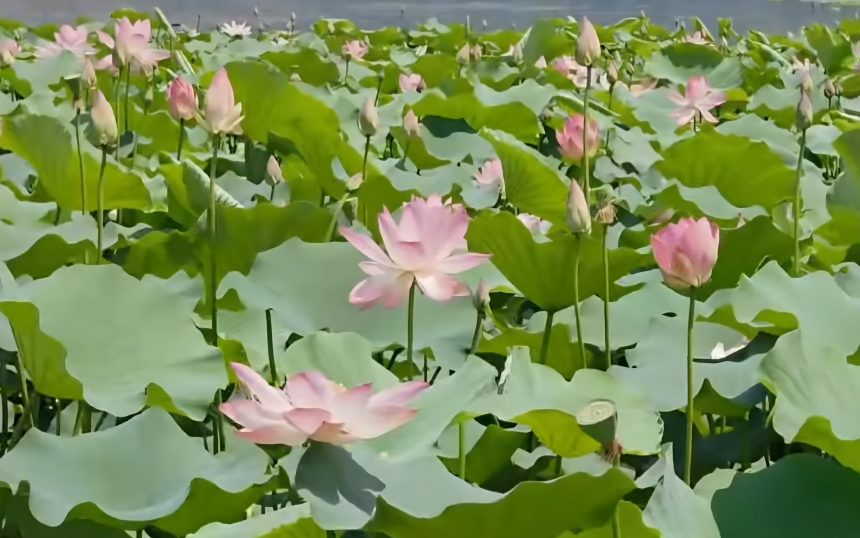Wular Lake in north Kashmir has witnessed the rare blooming of lotus flowers, locally known as Nadru,after nearly 25 years, marking a significant milestone in the lake’s ongoing restoration efforts.The vibrant lotus blooms were recently spotted in the waters of Wular, one of Asia’s largest freshwater lakes, situated in the Bandipora district. The spectacle has not only stirred environmental optimism but also revived hopes for economic upliftment among local communities.An official from the Wular Conservation and Management Authority (WUCMA), while confirming the development, credited the resurgence of Nadru to sustained dredging and ecological restoration measures undertaken over the past several years.“The revival of Nadru in Wular is the result of extensive dredging and de-siltation efforts that cleared years of accumulated soil and organic debris,” said the WUCMA official. “We also carried out controlled sowing of Nadru seeds—roughly 20 to 30 percent of what naturally grows—to support regrowth.”For nearly three decades, Wular Lake suffered from severe ecological degradation caused by unchecked siltation, pollution, and encroachments. Excessive deposition of sediment and organic matter blocked sunlight from reaching the lakebed, disrupting the aquatic ecosystem and halting the natural growth of native water plants like lotus.Human-induced pressures—such as illegal construction, sand mining, and unregulated agricultural runoff—further compounded the lake’s deterioration. By the early 2000s, Wular had drastically shrunk in size and biodiversity, with the seasonal bloom of Nadru becoming a distant memory.
Under the aegis of the Jammu and Kashmir Government, WUCMA initiated a comprehensive lake conservation plan. This included dredging clogged channels, removing silt deposits, halting encroachments, and reintroducing native aquatic vegetation. These efforts, particularly intensified over the past three to four years, have significantly improved water quality and set the stage for ecological recovery.“We noticed early signs of Nadru growth last year, but this season has shown a much more promising bloom,” the official added. “This is not just an ecological success but also a potential economic opportunity for local communities.”The official highlighted that the return of Nadru is more than a visual delight—it holds economic significance. A prized ingredient in Kashmiri cuisine, Nadru sells for Rs. 250 to Rs. 300 per kilogram in local markets. Its resurgence offers new hope for dozens of families living around Wular who depend on seasonal lake produce for their livelihoods.Local residents have enthusiastically welcomed the development, seeing it as both a return of natural beauty and a potential boost to their earnings. They also view the lotus bloom as a vital indicator of the lake’s improving health and biodiversity.“The return of Nadru tells us that the lake is healing,” said a local fisherman. “But the conservation work must continue so that this recovery is sustained.”Wular Lake, primarily fed by the Jhelum River, is one of South Asia’s largest freshwater bodies and is designated as a wetland of international importance under the Ramsar Convention. It plays a crucial role in flood control, water purification, and biodiversity conservation in the Kashmir Valley.Over the years, however, the lake has faced mounting threats from siltation, encroachments, and poor management. The return of the lotus blooms is now being seen as a hopeful sign—a possible turning point in Wular’s long and fragile ecological journey.








